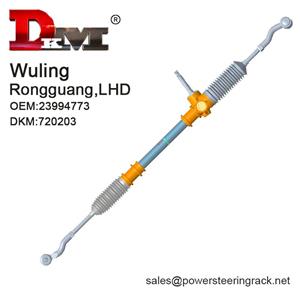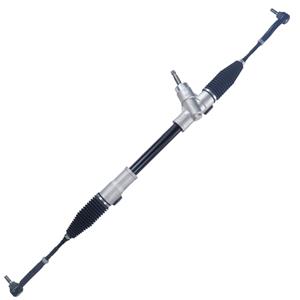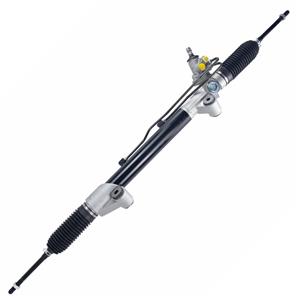Why is the steering rack gear of old cars looser?
The car steering system is one of the core components that affect the driving experience and safety performance. It is directly related to the driver's ability to control the vehicle and driving stability. In modern cars, the design and performance of the steering rack gear system are becoming more and more sophisticated, providing higher response speed and control accuracy.
Many owners of old cars may find that the steering rack gear of old cars is more "loose" compared with new models, that is, the steering wheel requires a larger range of motion, and the feedback during steering is slower. This phenomenon not only makes old car drivers feel inconvenient, but also triggers people's thinking about the technical differences of steering rack gear.
This article will explore why the steering rack gear system of old cars is more prone to looseness from four aspects: mechanical design, service life, maintenance status and technical limitations, and analyze the causes and effects of this phenomenon in detail.
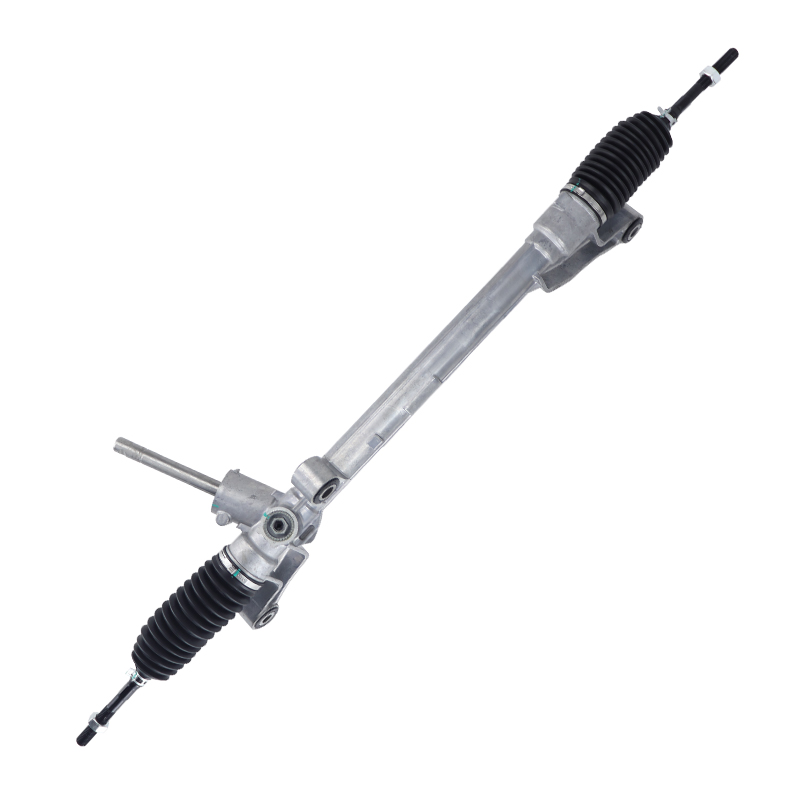
Why is the steering rack gear of old cars looser?
The so-called "loose" steering rack gear does not refer to the looseness of the components, but the hysteresis of the system feedback when the driver turns the steering wheel, and the situation that there is a certain gap between the steering wheel angle and the actual wheel angle. This phenomenon can be manifested in the following aspects:
1. Large steering offset
The steering system offset of old cars is more obvious, that is, when the steering wheel is slightly turned, the wheel does not turn quickly. This offset will make the driver feel that the control is not precise enough when driving at low speed or turning.
2. Weak feedback force
The feedback force of the steering system is the direct connection between the driver and the road. The steering system of old cars usually has weak feedback, the steering wheel control feels vague, and it is not easy to judge the contact between the wheel and the ground.
3. Control delay
In some old cars, the steering wheel needs to turn more, the wheel response speed is slower, and the driver may feel that the vehicle's steering response is delayed, especially when emergency avoidance or high-speed driving is particularly obvious.

Mechanical design reasons for the loose steering rack gear of old cars
The looseness of the steering system of old cars is closely related to its design concept and technical limitations. The following are several mechanical reasons:
1. Traditional rack and pinion design process
The steering rack gear system of old cars mostly adopts the early rack and pinion design. The core components of this design include gears, racks and steering shafts. Due to the limited precision of the processing technology at that time, the meshing accuracy between the gear and the rack was difficult to meet modern standards. This lower precision will cause the gap between the gear and the rack to increase, which will manifest as looseness.
In addition, in order to reduce manufacturing costs and meet durability requirements, the design of early steering rack gears usually adopts a larger tolerance range. Although this design improves durability to a certain extent, it also reduces the accuracy of steering, resulting in a "loose" control feel.
2. Lower steering assist technology
Old cars generally use hydraulic power steering systems, and the assist strength of the hydraulic system depends on the working state of the hydraulic pump. In old vehicles, the output pressure of the hydraulic pump may be low, resulting in insufficient assist. At the same time, the hydraulic system's assist force on the steering rack gear is not uniform enough, especially when the vehicle is at low speed or steering in place, the driver needs to use more force to turn the steering wheel.
In addition, older hydraulic power steering systems have a design hysteresis, that is, the hydraulic oil flows slowly between the rack and the power pump, causing uneven steering feedback. This hysteresis exacerbates the loose feeling of the steering system.
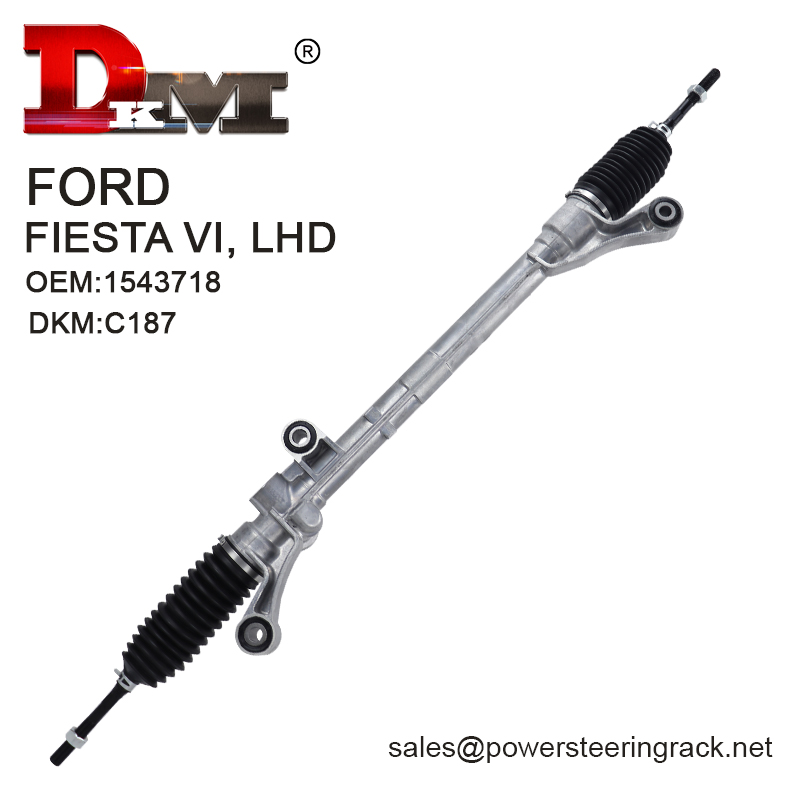
The impact of age on steering rack gear
As the age of the vehicle increases, the performance of the steering rack gear will inevitably be affected by wear and aging. The following are the main factors affecting the looseness of the steering rack gear due to age:
1. Wear of rack and pinion
The steering rack gear and the gear are meshing parts. They will be affected by friction during long-term use, resulting in surface wear. Wear will increase the gap between the gear and the rack, causing a loose feeling in the steering. In particular, the materials used in older cars have low wear resistance and are more likely to occur.
2. Aging of seals
Hydraulic power steering systems rely on seals to prevent fluid leakage. Over time, seals may age due to factors such as heat, cold, and pressure, resulting in hydraulic oil leakage or insufficient pressure. This situation will directly affect the performance of the steering rack gear, weakening the power assistance and making the steering feel more vague.
3. Loose or failed bearings
The steering rack gear system contains multiple bearings, which may become loose or fail after long-term use, causing the rack to have extra degrees of freedom when moving, further exacerbating the loose feeling of steering.
The impact of improper care and maintenance
The looseness of the steering rack gear in older cars may also be related to improper maintenance. The following are common maintenance issues:
1. Missing or deteriorating hydraulic oil
Hydraulic oil plays a role in lubrication and pressure transmission in the steering system. If the hydraulic oil is not replaced for a long time, it may deteriorate due to impurities or oxidation, reducing the performance of the hydraulic system and making the operation of the steering rack gear laborious and imprecise.
2. Loose fasteners
The steering rack gear is connected to the vehicle body and steering column through fasteners. If the fasteners are not checked and adjusted regularly, it may cause the rack to shift during operation, increasing the feeling of looseness.
3. Aging of rubber bushings
The steering system contains multiple rubber bushings to absorb vibration and reduce noise. When these bushings age or crack, the steering rack gear may shake during operation, affecting the driving experience.

The impact of technical limitations on the steering system of old cars
The design of the steering rack gear of old cars was limited by the technical level at that time, which directly led to the widespread existence of loose problems.
1. Lack of electronic control technology
Compared with the electric power steering system (EPS) widely used in modern cars, the hydraulic power steering system of old cars relies entirely on mechanical and hydraulic devices for operation, lacking electronic control technology to optimize steering performance. Therefore, the response speed and accuracy of the steering rack gear are low.
2. Design focuses on durability
The design concept of old cars focuses more on durability rather than control accuracy. This design tendency leads to a loose feeling in the steering system because the gap between the rack and the gear is larger to reduce wear and extend service life.
The impact of loose steering rack gear on driving experience
The loose problem of the steering rack gear of old cars directly affects the driving experience and safety. The following are the specific impacts:
·Decreased control feel: The large steering offset requires the driver to adjust the steering wheel more frequently, increasing driving fatigue.
·Slow steering response: When driving at high speed or making emergency avoidance, the lag of the steering system may lead to delayed operation and increase the risk of accidents.
·Reduced driving stability: A loose steering rack gear may cause the vehicle to deviate from the intended route during driving, especially when the road is uneven or turning.
The Best Deals on Power Steering Gears
Looking for the best deals on power steering gears? Guangdong Diamond Auto Parts Co., Ltd. (DKM) is your go-to supplier. Established in 1996, we specialize in high-quality, low-price steering gear systems for leading automotive brands like Toyota, Honda, and Mitsubishi. Our factory in Foshan, China, features cutting-edge technology to produce steering systems that meet international standards. Reach out to us for quotes, and get the best prices on steering gear products today.

